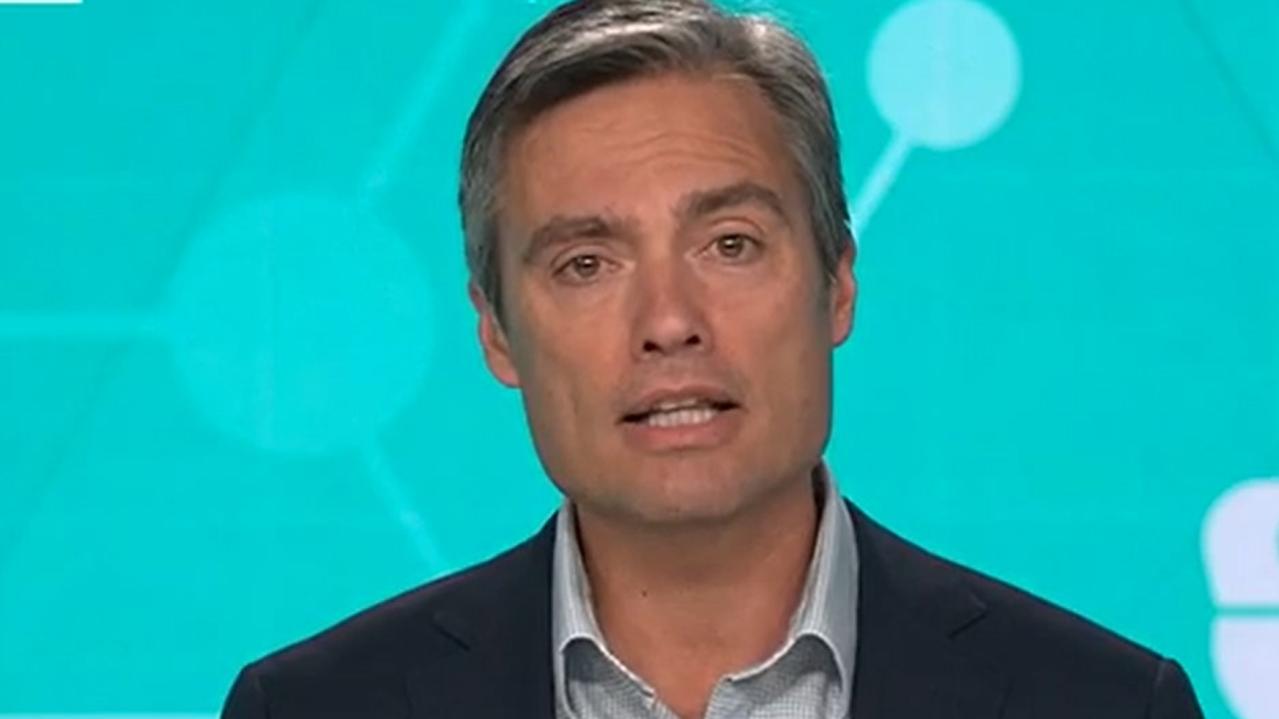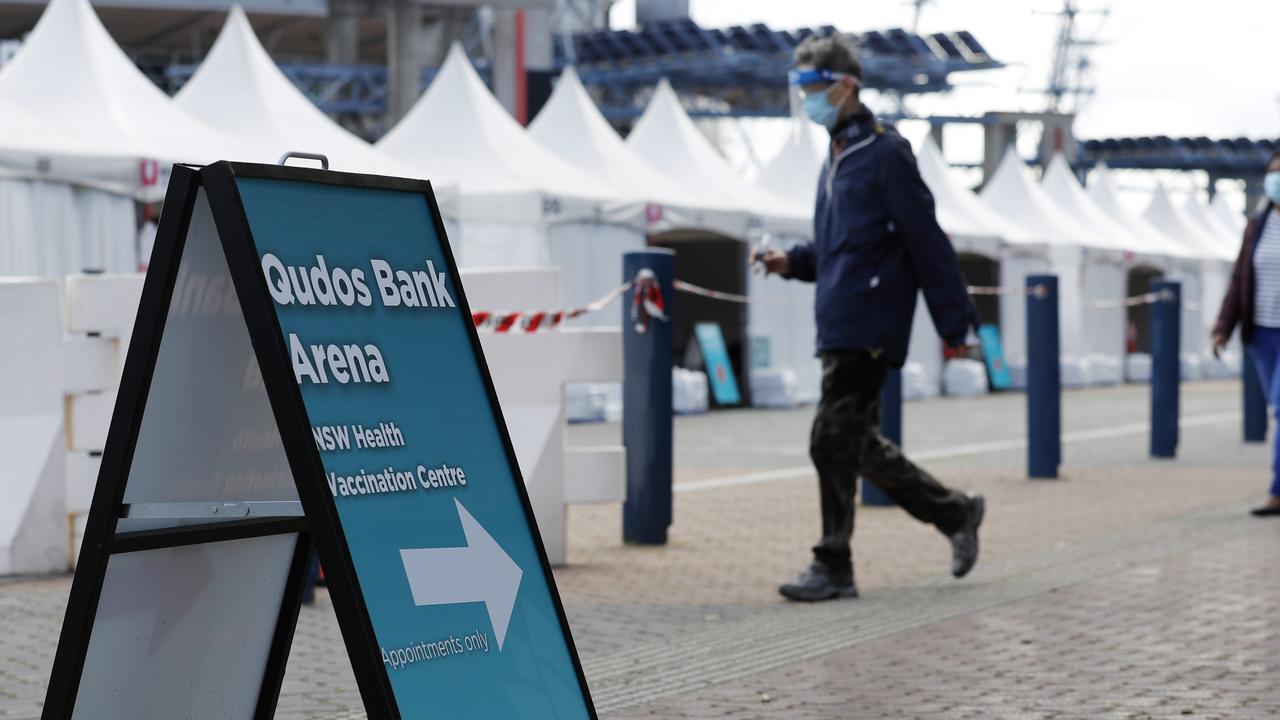NSW announces lockdown for four Sydney local government areas
NSW has announced a week-long lockdown for four local government areas of Sydney, as the state’s outbreak records its biggest rise in cases so far.
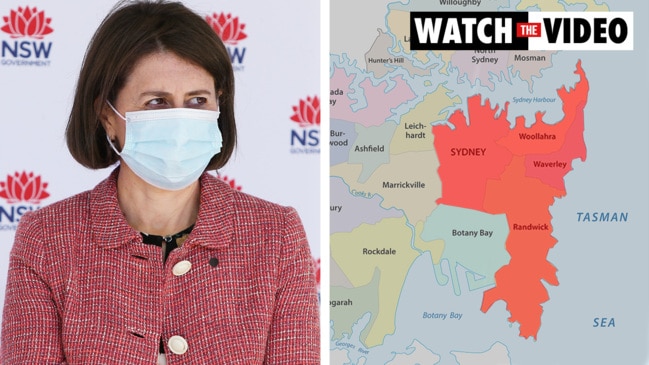
NSW has announced a week-long lockdown for four local government areas of Sydney, as the state’s Covid-19 outbreak records its biggest rise in cases so far.
Woollahra, Waverley, Randwick and the City of Sydney have been hit with a stay-at-home order lasting until midnight next Friday.
“If you live or work in those local government areas, you need to stay at home unless absolutely necessary,” Premier Gladys Berejiklian told reporters.
“The necessary reasons include if you can’t work from home and you have to work outside of home. If you can’t get educated at home and you have to get educated outside of home. If you exercise outside, although we don’t want groups of any more than 10. And if you need to provide care or compassion to a relative. And fourthly, of course, if you need to buy essential goods or services.”
The rules mean anyone who has worked in one of the four local government areas in the past two weeks must also stay at home.
Ms Berejiklian noted that applied to her as well. “I don’t live in those areas but I work there and have done so in the last fortnight, so therefore, I’m captured by that stay-at-home order,” she said.
NSW recorded its biggest rise in daily Covid-19 cases since the latest outbreak began on Friday, with 22 new locally acquired infections bringing the total to 70.
Existing restrictions announced earlier this week applying to seven local government areas – Woollahra, Waverley, Randwick, City of Sydney, Canada Bay, Inner West and Bayside – have been extended until 12.01am on Saturday, July 3.
EXPLAINER: Answers to your Sydney lockdown rules questions
“As previously stated, if you live or work in the City of Sydney, Waverley, Randwick, Canada Bay, Inner West, Bayside, and Woollahra local government areas, you cannot travel outside metropolitan Sydney for non-essential reasons,” NSW Health said in a statement.
“Residents across greater Sydney should also limit unnecessary activity and avoid large gatherings in coming days and comply with the current restrictions.”
Ms Berejiklian said she believed the new restrictions were a “proportionate response to the risk”.
“We’ve done better than expected in terms of contact tracing and getting on top of all those links, but what this does is make sure that we haven’t missed any chains of community transmission,” she said.
The Premier said it was also to ensure people did not spread the virus at workplaces.
“We appreciate that even though most of the cases have been in and around the south-east and the CBD, that many workers come from around the Greater Sydney area into those places, and unfortunately, those workers, once infected, are passing it on to a large group of clients,” she said.
Ms Berejiklian conceded the announcement would hurt businesses.
“If you are a business in those four local government areas, unfortunately, unless you’re providing essential food and services – that is, takeaway food and services or grocery services of that nature – we don’t expect those businesses to remain open in the next week,” she said.
“That means any gyms or indoor exercise places won’t be open. Nightclubs and things of that nature. Now, I appreciate this is a blow for businesses in those communities. But we’ve been able to limit it to those four local government areas and that is our intention.”
During the press conference, the Premier was asked why she was “not using the word ‘lockdown’”.
“You can use whatever word you want,” she said.
“But what is important for me is to explain to the citizens who are directly impacted, what our citizens can and can’t do. And we are making sure that we get that information out. We’ve chosen not to do the stay-at-home orders in a broader area.”
NSW opposition leader Chris Minns said he supported the decision.
I’ll be joining millions of people across our state in lockdown for the next week.
— Chris Minns (@MinnsChris) June 25, 2021
None of us wanted to have to do this, but it’s what we must do to keep our state safe.
We’ve defeated outbreaks before and we will do it again.
Follow the health advice and save lives. #nswpol
“None of us wanted to have to do this, but it’s what we must do to keep our state safe,” he wrote on Twitter.
“We’ve defeated outbreaks before and we will do it again. Follow the health advice and save lives.”
Australian Medical Association president Omar Khorshid said while the body was “pleased” with the move, “unfortunately in our view that is not quite enough”.
“What we really need are clear rules for all Sydneysiders that say, ‘Stay at home so we can get ahead of this virus and stop further transmission,’” Dr Khorshid told reporters in Canberra.
“The Delta virus is different. It is being transmitted is far more easily and everyone has acknowledged that it is different. Sydney has not faced this before and it means a different approach is required.”
Dr Khorshid said the AMA was concerned the current stay-at-home order was “confusing for many people in Sydney”.
“If you work in the CBD but live outside of it, we know if you contract the disease you are going to give it to your family,” he said.
“This is happening with the Delta virus in Sydney right now. But the rules don’t apply, as far as we can see, to family. There is also confusion as to who is in and who is out.”
The AMA instead wants a total lockdown of the Sydney basin with “the same rules for everyone”.
“If we do that, that would get let the government get ahead of the virus and give the contact tracers a chance to catch up (and to) avoid months and months of lockdown in Sydney,” Dr Khorshid said.
“The economic consequences of lockdown are significant but the economic consequences of getting this wrong are catastrophic, not just for Sydney but for all of Australia. Our belief is that we need everyone in Sydney to do the right thing and stay-at-home in order to stop this virus from taking a hold in Australia.”
But ANU infectious diseases expert Professor Peter Collignon said he believed the targeted stay-at-home order was “a proportionate decision based on the data we have at the moment”.
“You can still go to uni, school, work – I think it’s an appropriate restriction of movement while we’re waiting for more data and cases,” he told news.com.au.
“There are a lot of social and economic costs (of lockdowns). So far the NSW approach has been quite successful at eliminating all these clusters as they occur.”
Earlier on Friday, Prof Collignon had pushed back on calls for a broader Sydney lockdown.
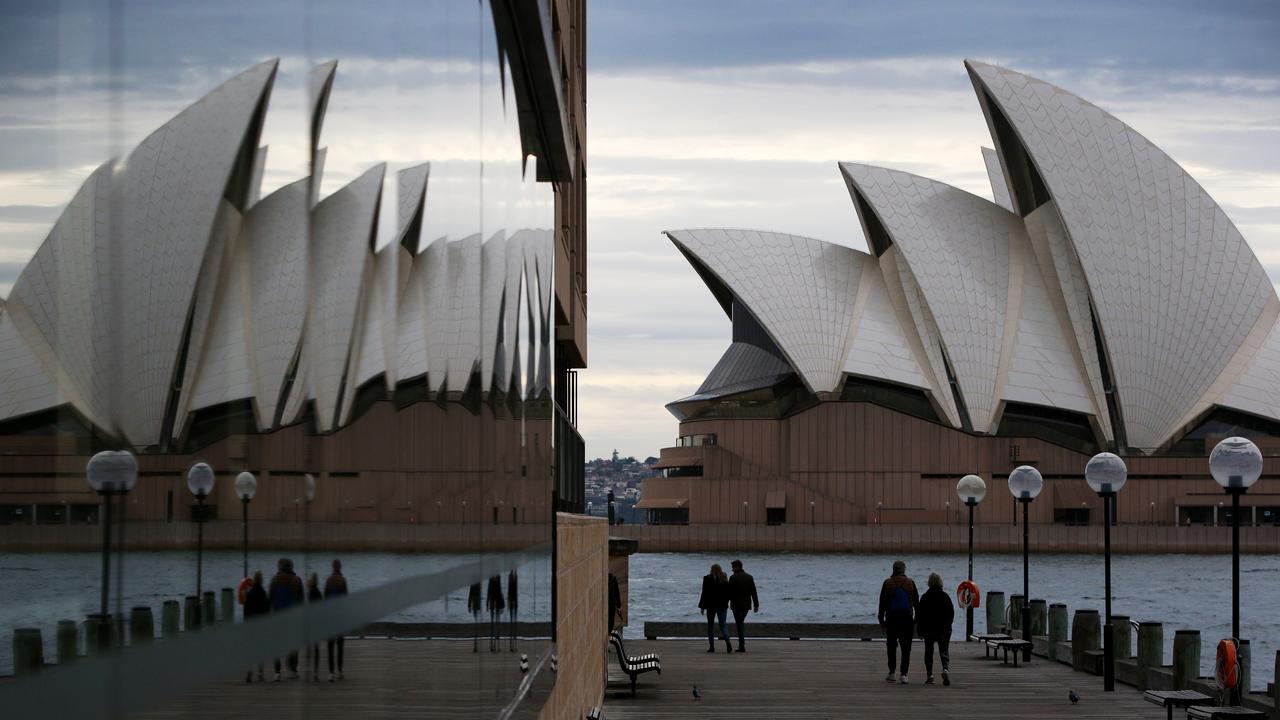

Lockdown backflip in 24 hours
Friday’s announcement came after NSW Deputy Premier John Barilaro hinted at a possible Sydney lockdown, saying health advice “could change in the next few hours”.
The state government was holding crisis talks at 9.30am to assess whether the existing restrictions were enough to contain the outbreak.
Mr Barilaro said this morning lockdown wasn’t required based on the current advice.
“We look at the numbers, 11 cases (does) sound alarming (but only) one is a mystery case,” he told Nine’s Today.
“It is not just the numbers, it is the detail, the information we have behind the scenes that our expert health officials look at that gives us the confidence to make the decision and the advice at this stage is not to lock down. At this stage I don’t think we need a lockdown. But that advice could change in the next few hours and it could change over the weekend.”
Public health experts were divided on whether Sydney needed to impose a “short, sharp” lockdown.
Some had warned Sydneysiders were “sitting ducks” as the Delta variant spreads, but others argued the number of “mystery cases” did not yet warrant such drastic action.
The NSW government had been criticised for resisting calls to lock down the city despite another rise in cases on Thursday which saw the outbreak reach 48.
Ms Berejiklian said it was the “perhaps the scariest period” that the state had faced since the start of the pandemic due to the new Delta variant – but insisted that the tough restrictions announced on Wednesday were the “appropriate settings”.
Asked on Thursday whether NSW would consider a three-day lockdown, chief health officer Kerry Chant said that would not be “long enough”.
“Three-day lockdowns don’t work if you’ve got distributed disease,” she said.
Dr Chant said a three-day lockdown was used in situations “where you have a sudden surge of cases and you want everybody to stay in the same place, and that allows you to get any backlog of any contact tracing”.
“We are not in that situation where we are not getting to people in terms of the contact tracing,” she said.
Dr Chant was asked on Friday what had changed overnight.
“As I said, we look at the number of cases coming in,” she said.
“And the fact that our exposure list is getting longer and the fact that we have got confirmed transmission at some of those settings.”


‘We are sitting ducks’
Professor Raina MacIntyre, head of the Biosecurity Research Program at UNSW’s Kirby Institute, wrote in an opinion piece for The Sydney Morning Herald last night that Sydney was “on a knife edge of a Delta epidemic”.
“We are sitting ducks, with a largely unvaccinated or partially vaccinated population,” Prof MacIntyre said.
“Lockdowns are a last resort but, like mask mandates, are most effective when used early. The purpose is to reduce contact between people (and therefore to reduce the opportunity for growth of the epidemic).”
Prof MacIntyre argued that “waiting until the situation is out of control will require a much longer and more costly lockdown”, and claimed “multiple studies have now shown that lockdowns actually protect the economy compared with out-of-control epidemics”.
“Countries like Australia and New Zealand, which used stringent measures, fared better economically than most of Europe or the US in 2020,” she wrote.
“If case numbers keep rising, a short, sharp lockdown combined with school holidays might be just the circuit breaker we need to ensure this outbreak does not escalate.”
ABC health expert Dr Norman Swan, who earlier this week warned Sydney faced a “disastrous scenario” without a lockdown, agreed with Prof MacIntyre’s take, writing on Twitter that she had been “right about this pandemic from the beginning”.
But Sky News host Rita Panahi slammed the comment, highlighting a prediction from Prof MacIntyre during the northern beaches outbreak in December warning of 3000 cases by January 8.
“The relentless scaremongering from the lockdown enthusiasts never stops,” she wrote.
“Raina’s been right about this pandemic from the beginningâ€. He’s doing comedy now.
— Rita Panahi (@RitaPanahi) June 24, 2021
This is from December. The relentless scaremongering from the lockdown enthusiasts never stops. https://t.co/uteYQPhF4Mpic.twitter.com/dzjcpflSc6
Appearing on the ABC’s QandA on Thursday night, UNSW Professor Mary-Louise McLaws, who is an adviser to the World Health Organisation, and Adjunct Professor Bill Bowtell, a strategic health policy consultant with the university, also advocated for a lockdown.
“I think NSW is loath to use lockdowns,” Prof McClaws said.
“Mostly every other state does. I think this time they’ve had a very slow increase in numbers and a very high peak which is quite unusual for this variant of concern, but I still think that they should have gone into a sharp lockdown to stop people from wandering, particularly over the weekend.”
Host Hamish Macdonald asked whether NSW had the latest outbreak under control.
“Well, no,” she said.
“We’ve had several cases that are potentially causing more harm down in Melbourne. We have the hairdresser that has been a mystery link as they call it, then we’ve had the woman that went to New Zealand, so we’re going to see more cases.”
She said the cases “may not be enormous in number but that’s beside the point”.
“This is a variant of concern that has a reputation for causing more hospitalisation and of course more (transmission from) children because of the large numbers of people they can infect,” she said.
Dr Bowtell agreed. “The Premier is right to say this is a very scary moment, but you can’t have it both ways,” he said.
“You can’t say it’s a scary moment and we must do all the things that we must do, testing and so on, and then think it’s business as usual. We only have one weapon in our armoury unfortunately now that works, and that’s, as Mary-Louise McLaws said, a short sharp lockdown.”

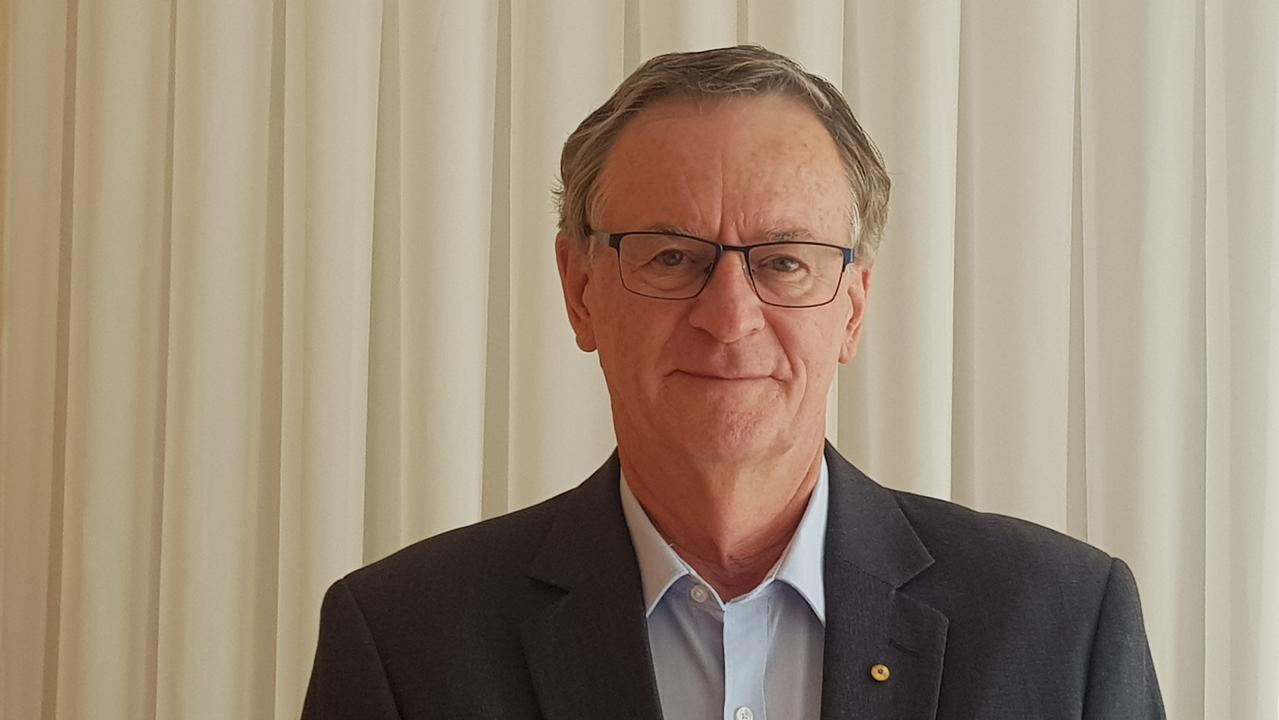
Lockdown ‘not justified’
Prof Collignon from the ANU said this morning that as of Thursday’s numbers, there were still not enough “mystery cases” to justify a lockdown.
“Should we lock down Sydney because we’ve got three mystery cases? I would think that isn’t justified,” he told news.com.au.
“It’s not that lockdowns are not on the cards, but the rationale for a lockdown is having lots of cases in the community and particularly lots of mystery or unlinked ones. The real significance of that is for every person unlinked is another you haven’t found yet still spreading infection.”
Prof Collignon said a lockdown would only be used when Covid-19 was spreading widely in the community.
He said the current restrictions already in place in Sydney were “significant”.
“I actually think we’re too black and white with the term lockdown,” he said.
“Even last April, Victoria allowed no visitors (in the home), NSW allowed one, most others two, South Australia 10 – all had the same result, they managed to control it. What we want is restrictions on people when there is Covid-19 in the community, but they need to be proportionate to the risk at the time.”
This is exactly what it should be about. Not "cases". https://t.co/bpCQEWUwuR
— David Scutt (@Scutty) June 24, 2021
Prof Collignon predicted that the latest Sydney outbreak would peak over the next few days before fizzling out.
“All these clusters go for two to three weeks,” he said.
“We’ll see a peak over the next few days, 11, 12 cases (a day) then gradually it’ll go down. What we’ll find in the second half is just about everybody will be in isolation or quarantine.”
Prof Collignon added that as more of the population became vaccinated, Australia would have to follow the lead of Singapore in preparing people to live with Covid-19 like any other endemic disease.
The Straits Times reported earlier this week that Singapore’s government planned to stop giving “daily updates on infection numbers”, and would “shift to focus on outcomes, such as how many patients fall very sick and end up needing intensive care, the same way the flu is monitored”.
“My view is we’ll need to do that too,” Prof Collignon said.
Singapore is tying the shift to this “new normal” to certain vaccination milestones. By early next month, two thirds of the population will have received two doses of a vaccine.
Australia has administered just under seven million vaccine doses, but only one million people have received their second dose – or about 5 per cent of the adult population.
Prof Collignon said Australia should make a similar shift once 70 to 80 per cent of adults were vaccinated, and potentially 80 to 90 per cent of over-70s, because “that’s where 90 per cent of the deaths occur”.
“Look at Melbourne – if over-70s were vaccinated, instead of 800 deaths they would have had 60,” he said.
“That’s still not good, but every year there are thousands of deaths from influenza and the common cold.”
Read related topics:Sydney



